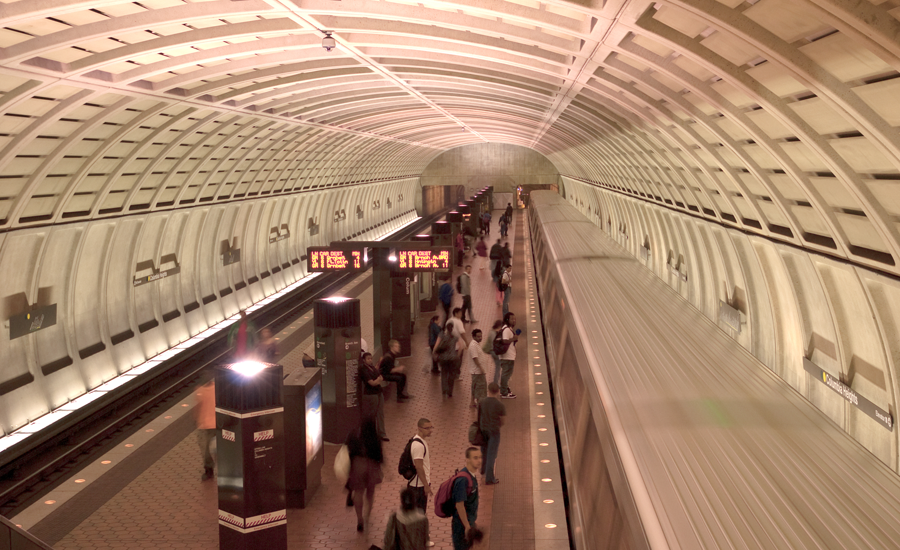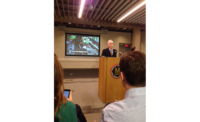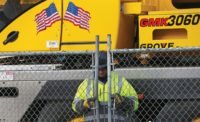After an unprecedented 29-hour shutdown of Washington, D.C.’s Metrorail transit system, inspectors identified 26 potentially serious issues with jumper cables linking electrified third rails. The defects were repaired in time for all six Metrorail lines covering Maryland, Virginia, and the District of Columbia to resume normal operations at 5:00 a.m. on March 17.
Paul J. Wiedefeld, CEO and general manager of the Washington Metropolitan Area Transit Authority (WMATA), on March 15 ordered the closure of the agency’s 118-mile rail system, one day after an early morning electrical fire filled a tunnel beneath downtown Washington with smoke.
A preliminary investigation attributed the fire to arcing caused by a frayed jumper cable that made contact with adjacent metal. There were no injuries from the fire, but the event was similar to a January 2015 incident that killed one passenger and injured several others.
Wiedefeld was deeply concerned because the latest fire had occurred after WMATA had carried out an inspection program for jumper cables in the wake of the January 2015 fire.
He decided that passenger safety took precedence over convenience, and announced the shutdown so that new assessments could begin immediately after the system closed at midnight March 15. He ruled out shutting down individual stations, segments or rail lines. It was the first non-weather-related system shutdown for Metrorail, which transports approximately 712,000 weekday passengers.
WMATA, choosing to rely primarily on outside resources, deployed teams of engineers and contractors to inspect approximately 600 jumper cables across the system’s underground, surface, and elevated sections. Wiedefeld said the inspectors looked for defects in cables, damaged or misaligned protective boots, water infiltration and debris that could burn near the cables.
Several examples of cables and boots requiring repairs were concentrated in three heavily traveled tunnel areas. Wiedefeld characterized the damage as being “show-stoppers”—severe enough to have warranted service stoppages if WMATA had been aware of them.
Sen. Barbara Mikulski (D-Md.) says of the shutdown, "It was drastic. It was disruptive, and yet, I believe was necessary."
With the repairs complete, Wiedefeld says WMATA’s next step will be to determine how the problems arose, particularly after steps the agency had taken after the 2015 incident.
Wiedefeld, appointed to his post last November, has been critical of the agency’s inconsistent safety culture, as well as infrastructure and railcar maintenance issues that have gradually compromised system reliability in recent years.
Unlike other metropolitan transit systems, Metrorail has no dedicated revenue source aside from passenger fares and from the two states, the District of Columbia and local jurisdictions it serves.
The U.S. Dept. of Transportation also is focusing hard on WMATA. DOT Secretary Anthony Foxx says that the department's Federal Transit Administration will launch a "safety inspection blitz" looking at three areas that DOT has found to be "serious problems" at Metrorail—running red signals, emergency-brake use and "track integrity.
Testifying on the day of the shutdown at a Senate appropriations subcommittee hearing on DOT's fiscal 2017 budget proposal, Foxx said he has directed FTA to review "hundreds of millions" of dollars in "unspent balances" of federal grants to WMATA and see whether that money can be directed to safety-related purposes.
But Foxx added, "I don't think it's just resources." He said, "The culture down there [at WMATA] has got to change and we can't enable the continuation of these safety failures any longer."
Mikulski, the top Democrat on the Appropriations Committee, said, "For months and years now, we have called for a culture of safety [at WMATA] but what we get is a culture of resistance to making changes for safety."
Mikulski added that she and the other U.S.Senators from the WMATA region plan to meet with Wiedenfeld after the congressional spring recess.






Post a comment to this article
Report Abusive Comment